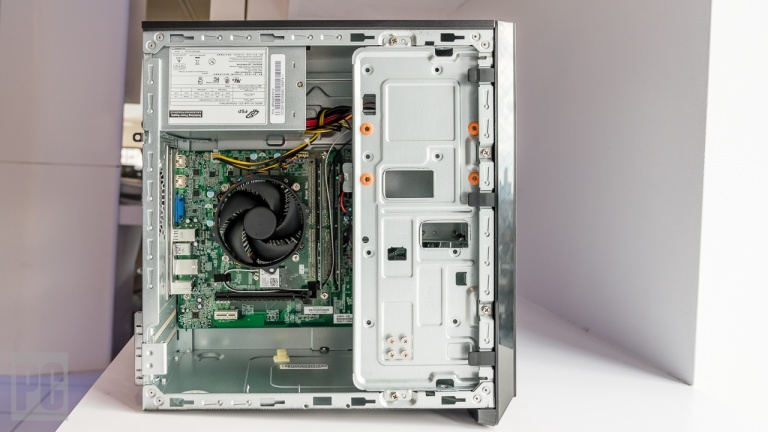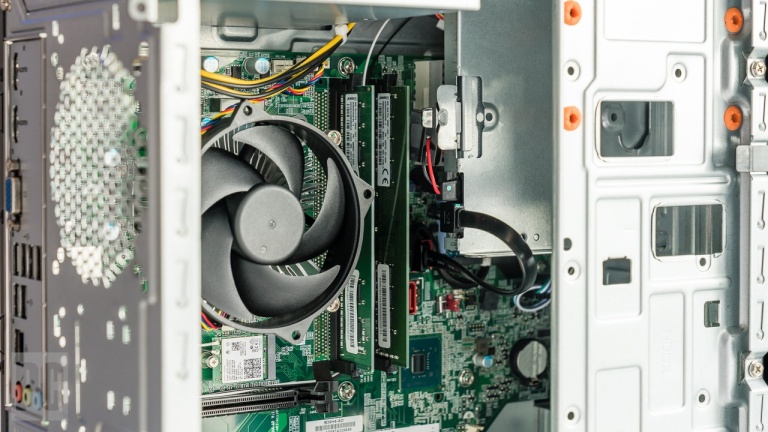Hearing the words “budget Desktop Computers” may conjure some negative vibes, but it doesn’t have to be that way. In the desktop-computer world, inexpensive is not synonymous with low-quality or slow, especially nowadays.
Whether you’re replacing an older, flagging PC, setting up a digital signage solution, or equipping a new or temporary office that needs only simple computing, a budget or mini PC may do the job. Today’s budget desktops offer a modest baseline for performance and decent flexibility, while lasting longer than they used to. We’re talking about desktops that cost $800 at the very most, with many coming in under $500 and a few even below $200.
Now, a handful of these may not be what you normally picture when imagining a desktop, but you’d be surprised at the capability of some of these small boxes. These PCs are certainly able to surf the web, stream videos to a monitor or big TV, operate a public display, or allow you to work on simple documents and other everyday productivity tasks. They can even run web-based games, should you have the need. They come in a few different shapes and sizes, most tending to the small. The closer-to-full-size towers, meanwhile, can do just about everything you expect from a modern home PC.
Shopping for a budget desktop isn’t too different from standard desktop-buying considerations, but there are some key things to know. If you’re looking at a very small system, mini PCs tend to come in a limited set of models to choose among, tightly designed to do what they do well. Intel’s Next Unit of Computing (NUC) mini-PC line is among the most configurable, with plenty of variation among its models. These machines can be bought as fully configured systems, or, for the more DIY-minded, as barebones kits that enable you to install components of your choice.
Intel is a big player, but not the only one, when it comes to small, inexpensive desktops. Compact-system specialists such as Azulle, ECS, Shuttle, and Zotac focus on this area, and some broader PC players such as Asus have offerings in this category, too. Apple has one, as well: the Apple Mac mini sits toward the top of budget pricing at $699, but the 2020 model bearing Apple’s M1 CPU is very appealing.
First, Consider the Form Factor
What’s immediately obvious about most of these budget PCs? How they look. Modern components have made the PC-performance baseline very solid, even on a $500 tower, versus what it used to be. This allows traditional small- and midsize-tower PCs to thrive in this price range. These remain some of our favorites for the money, as time-tested solutions to home computing.
You’ll also see an assortment of (impressively) small boxes, bare boards, microtowers, and even some stick-shaped PCs to choose among. The smallest of these systems measure just a couple of inches tall and only a few more across, while several of our top picks are mini boxes just a few inches tall and wide—and it’s hard not to marvel at these systems running full Windows 10. With their small size and dialed-down power, they save you not just money, but space, which can be crucial in certain usage situations. If you want to just plug one in out of sight behind a monitor or HDTV, you’ll hardly know it’s there.
Despite their compact sizes, our favorite small models still offer a respectable number of ports. The best of these boxes offer plenty of physical connectivity and expansion options, which make them versatile depending on the deployment. If you need to connect displays and peripherals, or add storage, there’s an option here for you. The larger towers, of course, provide a more comprehensive complement of ports, including some up-to-the-minute options like USB Type-C.
Component Check: What’s Inside?
It should come as no shock that you’ll find lower-power processors in these less-expensive desktops, but you may be surprised at how capable some of them are for the size and price. But you’ll need to select carefully.
CPU advancements mean that the floor is higher than it used to be. All modern budget systems will have at least a dual-core CPU (some have quad-core chips), and most take just a few seconds to boot up. A handful of these models (usually, mini-towers) include a bonafide Intel Core i5 desktop-strength processor, in some cases even a legitimately quick six-core/six-thread chip. An important note, however: Mini PCs, and even some small mini-tower-style models, may use mobile-grade processors instead of desktop ones. Look at the name of the CPU when shopping; any Intel or AMD CPU ending in “U” in a small desktop is a laptop-equivalent processor.
For either type, though, web browsing, streaming video, displaying data, and working in simple documents is a snap. All of these models are far from pro workstations (you’ll still want a more powerful and more expensive chip if you’re planning on editing media or holding web conferences for business with multiple participants), so it’s important to tailor your expectations to the specs. With the models that indeed use low-power laptop CPUs, you may save a bit of money and reduce noise and power consumption. These are demonstrably slower than entry-level desktop CPUs, but an okay fit for a child’s computer or a basic streaming media server. Just be wary of these processors if you’re shopping for your main productivity PC, as their speed is lacking for everyday multitasking.
At the very least, have an idea of the most strenuous tasks you’ll throw at this machine to determine if a budget desktop can fit the bill. Demand a true desktop chip if much multitasking is on the agenda. These will be Intel Core i3 or i5 processors, or AMD Ryzen 3 or 5 chips, with a model number not ending in “U” but more likely a zero, an “F,” a “G,” an “X,” or a “T.” As for Apple, the newest-model Mac mini is no longer using Intel processors, but Apple’s own (impressively fast) M1 processor mentioned above.

Moving on to memory, which will help move those tasks along smoothly, really cheap stick-type or ultracompact desktops in the $100 to $200 range will come with 2GB, only enough for simple digital-signage installations or extremely low-demand, single applications such as word processors. An increasing number come with a basic 4GB, though, especially in the $200-plus range. Up at $400 and above, 8GB is common, and some units even manage to include 12GB in under-$700 configurations. For a PC you’ll rely on every day for productivity work, 8GB is really the minimum you should insist on under Windows 10.
Storage is an area you may have to set some firm expectations around, as capacities are seldom very high; these types of desktops are not meant to store huge amounts of files locally. In the cheapest, smallest desktops, you’ll get as little as 32GB or 64GB of what’s called eMMC flash storage, similar to what’s offered in most Chromebooks. (It’s roughly the equivalent of an internal flash drive or SD card.) Pay a bit more, though, and you can net 64GB or 128GB; give preference to models that call out their storage as solid-state drives (SSDs) versus eMMC; SSDs will feel snappier. Some of the full-size towers on our list include 256GB or even 512GB SSDs, at which point you’re hardly compromising any more. We strongly favor SSDs over hard drives, even in this price range.
Look for higher-capacity storage if you’re a serial downloader, but as evidenced by Chromebooks, internet-connected devices can get away with a lot less local storage thanks to the cloud. Flash storage and SSD will be norm in the really small budget desktops, as these models are too tight inside for conventional 3.5-inch (desktop-size) hard drives, but some can take 2.5-inch (laptop-size) drive upgrades. If you ever need more storage space, USB 3.0 and USB-C ports will also let you attach a speedy external hard drive or SSD.
Mini-towers and the usual towers, though, can often take a hard drive or two in an empty internal 3.5-inch drive bay if you need bulk storage on the cheap. We’ve even seen isolated mini-tower models preconfigured with a small SSD as the boot drive, plus a mass-storage hard drive. This is the best of both worlds in a budget config, but you’ll have to shop around to find one. (Usually you get just one or the other.)

Budget machines, whether big or small, almost exclusively come with the integrated graphics built into the CPU, not a discrete Nvidia GeForce or AMD Radeon graphics card. You need a video card for leading-edge gaming experiences or 3D applications, which are several tiers above what these PCs offer. At best, integrated graphics can run some less-demanding games at low detail settings and resolutions, or very visually simple and 2D games, smoothly.
It goes without saying that an enthusiast gamer should look elsewhere (check out our favorite cheap gaming laptops and gaming desktops), but you could still get away with some light gaming on these. Gaming models with dedicated graphics cards start at several hundred dollars higher than the $500 range, but a few are starting to creep in around budget pricing; one of our current favorites is the CyberPower Gamer Xtreme GXi11400CPG.
















